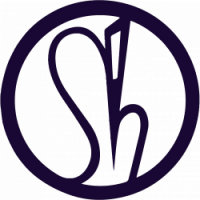So here we are at the end of a challenging but hugely engaging a fun journey and now we have to represent the ‘best vision’ of the project as a walkthrough video (cut and edited)
The project has taken many twists and turns along the way. Both the narrative, purpose and technical requirements have changed over time.
The project began as a standalone PC adventure app with all the processing power available to create high quality material maps, geometry and lighting.
After being gifted a gear VR, the project was converted to mobile VR app which meant that a great deal of optimisation was required and, after reviewing the documentation, I decided to rebuild the project on Unity 2019.2.14. This version was on the tipping point between using gear VR and oculus go devices. I first used the Oculus plugin then the Oculus integration plugin but couldn’t update to the new XR Integration. In February support was dropped for gear VR and so I traded the HMD and bought an Oculus Go. Oculus Quest headsets are globally currently in short supply.
I’m currently waiting for Unity to launch the next LTS (Long Term Support) so that it is stable enough to develop for Oculus Quest (when I can get one) but that’s for another day 😀
In regards to the production of the project. I followed the Unity mobile VR best practice guidelines I decided to do the following:
✔️Opt for low poly models where available.
✔️Replace the Labyrinth walls with simpler geometry
✔️Replace multiple materials with one central material from which multiple objects could draw.
✔️Replicate and reuse models where possible.
✔️Remove all lighting and effects and examine the alternatives.
To replace lighting in the scene I was inspired by the way in which Quill approaches lighting. Quill software does not have a lighting function and so all lighting in the scene is literally painted with light.
Copyright Zeyu Ren
I also removed multiple material maps to limit draws on processing these so I created a painted light, multi-material.
Sarra Hornby ©️ All Rights Reserved
Together with reusing objects that were low poly, this really reduced the file size and processing load. Various analyst is were run and it seemed to solve the problem of converting from a Standalone Windows app to Mobile Vr app.
All good.
Except now I wanted to present a ‘best version’ of my concept and so decided to rebuild the app so that I could add effects, lighting, animation etc without the constraints of Mobile VR. However, I know that when unity launches its next LTS and I can get an Oculus Quest I will convert the project back to mobile VR.
Basically, I want to find a middle ground, and have the best of both worlds…
So, I rebuilt the app by doing the following:
✔️ Unity 2018.4 LTS as it is the most stable version of Unity.
✔️ lit multi-material map
✔️ low poly geometry
✔️ Higher poly labyrinth with more rooms.
✔️ Animated objects
✔️ Animated Agents
✔️ NavMesh and Navemesh agents
✔️ 3 point Directional Lighting for the environment
✔️ Multiple Point Lights
Building for PC with a potential conversion back to Mobile VR means that I need to be constantly aware of processing load and how the changes I make will impact on the device performance while also thinking about how easy it will be to remove the effects at a later date.
With this in mind, I decided to revisit cinematography to add cameras and camera tracking to my scene. Unity Learn (which is currently free for 3 months .. which is actually one of the best things to come out of this pandemic as well as an increased interest in VR) had a number of interesting and informative web pages and videos to follow.
Timeline
Cinemachine
Post processing
I also followed the Linked In Learning course, Cert Prep: Unity Materials and Lighting (including post-processing)
Next Steps:
🔲. Complete small fixes to the scene.
🔲 Add post processing to the player camera.
🔲. Add effects that mimic ‘papery’ effects such as grain and soften shadows etc (Use paper models as a reference)
🔲. Add effects that mimic ‘stop-motion animation’ camera movement (if possible)
🔲. Record first walkthrough and identify key shots
🔲. Create a first draft animatic (for Al to review if possible)
Note:
Regarding the second part of the assignment, I need to read through all blog posts and identify key moments in the project development as well as key images (HD).



